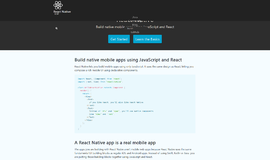Overview of biometrics and face recognition
There are various types of biometric identification systems. These include skin texture recognition, iris recognition, fingerprint scanning, voice recognition, finger vein identification and facial recognition. This section focuses on Facial Recognition.
Biometrics operates in a process that involves capturing (a behavioral sample captured by the system e.g. during admission), extraction (unique data is identified from the sample and a reference template is created), comparison (the reference template is then compared to a new sample) and matching (the system decides whether the new sample features and those available in the reference template are a match or not) in order to identify or authenticate.
What is facial recognition?
All biometrics systems measure and match the unique characteristics for the purposes of identification or authentication. Of all the other biometric software applications, face recognition is reputably the fastest as well as the least intrusive. This application works by identifying a specific individual in a digital image through the analysis and comparison of human face patterns.
Unlike the other biometric systems, facial recognition systems would take pictures of individuals entering into a certain defined area. This is done in a manner that ensures subjects are unaware of the process. There is neither intrusion nor delay which ensures that people do not feel under constant surveillance or that their privacy has been invaded.
Facial recognition software leverages a digital camera which can detect faces in images then quantify their features and finally match them against stored templates available in the database.
How does Facial Recognition work?
Every human face has a huge number of distinguishable points including different contours and peaks that make up the facial features. These come to almost 80 nodal points of which some are measured by the facial recognition software. In this case, nodal points are the end to end points used to measure different variables of a person’s face. All algorithms work based on these nodal points. These include:
- Distance between the eyes
- Depth of the eye sockets
- Width of the nose
- The length of the jaw line
- The shape of the cheekbones
Data of the different nodal points create what is known as a face print, a numerical code which represents the face in the reference database. After the facial recognition software analyzes the above characteristics input through a digital video camera, the measurements are retained in a database. In the event that a human face comes within a few feet to the camera, the facial recognition system captures the user's face then performs matches against the claimed identity of the facial database.
Verification might be carried out based on different facial positions and eventually the system would come to a conclusion within few seconds. Based on the numerical code and face prints, the face recognition systems could easily and accurately identify targets when conditions are normal and favorable. However, in the case of insufficient lighting, an obscured face or when the target is facing away from the camera, the software could be less dependable.
Common uses in applications
Face Recognition biometric technology is incredibly versatile. There is a wide array of potential applications in which it is useful. Although this biometric has not received wide acceptance such as fingerprint biometrics it is widely used in recognizing potential threats like terrorists in many law enforcement areas.
It is also widely used in software development for smartphone applications. Such developments include image tagging as well as social networking integration. Some research teams for example have come up with a proof-of-concept iPhone app that has the ability to return an individual’s name, social security number as well as date of birth only by cross-checking their picture.
Personalized marketing has also been enhanced whereby billboards or information posters have recognition software able to identify ethnicity, gender and approximate age of onlookers and therefore delivering targeted advertising.
The fact that Facial Recognition technology is very difficult to fool regardless of beards, eyeglasses or makeup which makes it a popular authentication tool in high traffic areas that are accessible to the general public such as:
- Financial institutions
- Government offices
- Schools and Corporations
- Stadiums
- Businesses
- Public transportation e.g. Airports and railway stations
Further classification of the face recognition technology application includes areas such as;
Information Security: Accessing security, Data Privacy and User Security.
Law Enforcement: Suspect identification, Suspect tracking, Forensic reconstruction of faces from remains and Video surveillance.
Personal Security: Home video surveillance systems.
Access management: Permission based systems, Access logs and secure access authentication
Biometrics: Automated identity verification and person identification e.g. National IDs or Passports and Voter registration.
Products and companies dealing with it
Most companies dealing with Face recognition technology provide products that circulate around providing easy to use as well as customizable face recognition technology through video scan (which performs real time video screening and concurrently computing anonymous people analytics), Portrait acquisition (acquisition and assessing digital portrait images for photo ID documents), Database Facial scans, Entry Systems (Integrates into eGates and performs quick verification against passport photos).
There are over 50 reputable companies offering Facial recognition technology and biometrics worldwide. The full list is available at http://www.biometricupdate.com/service-directory/facial-recognition.
Conclusions
Face recognition is a breakthrough technology which poses both a challenge as well as significance in face recognition. Notably, among all the biometric techniques, facial recognition approach is advantageous in the fact that it is non-intrusive meaning user-friendliness. The introductory insight provided in this paper on face recognition technology, how it works and its important applications as well as the generic framework for face recognition, and face recognition algorithms aim at providing valuable information so as to give a better understanding about face recognition technology.
Recent Stories
Top DiscoverSDK Experts


Compare Products
Select up to three two products to compare by clicking on the compare icon () of each product.
{{compareToolModel.Error}}

















{{CommentsModel.TotalCount}} Comments
Your Comment